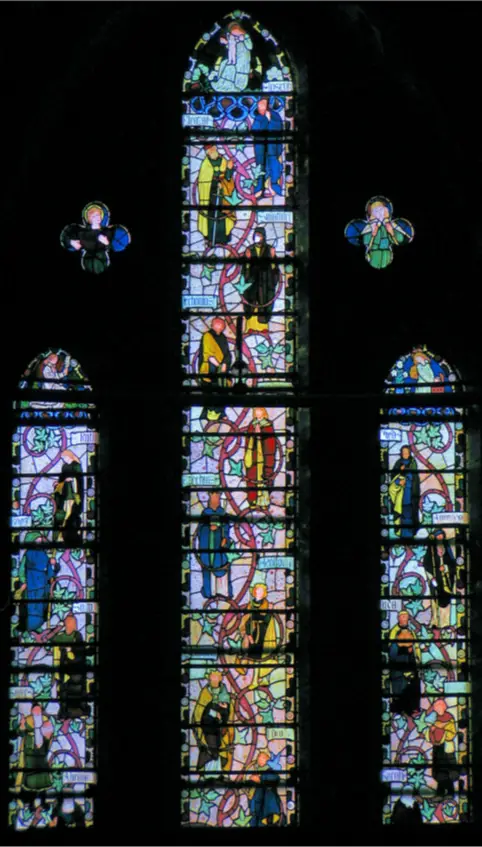Why interest in William Morris stained glass windows?
During the 19th century, a reaction against increasing industrialization as well as commercialization made people to for inspiration for simpler times through past. In the medieval period, there was reappearance in interest in all things including William Morris stained glass windows, and the Pre-Raphaelites in particular as they were heavily influenced by medieval themes as well as imagery.
In 1861 William Morris set up his company named “Morris, Marshall, Faulkner & Co”, known as ‘the Firm’. This company used to provide fashionable families with everything they need to furnish their homes in the new Arts and Crafts style. Among this, one of their biggest successes was stained glass. Their company took not only the private domestic commissions but also they replaced church windows all over the country.
His creations involve The Bradford Tristram and Isoude series which includes ‘The Reunion of Tristram and Isoude at Tintagel’, ‘Tristram and Isoude at King Arthur’s Court’, ‘The Tomb of Tristram and Isoude at Cornwall’, ‘Guenevere and Isoude’, ‘King Arthur and Sir Launcelot’. Moreover, Musical Angel (1), Musical Angel (2), Musical Angel (3), Musical Angel (4), Musical Angel (5), Musical Angel (6), Musical Angel (7), Angel holding a Scroll (1), Angel holding a Scroll (2), Angel holding a Scroll (3), Angel holding a Scroll (4), Angel holding a Scroll (5), Angel holding a Scroll (6), Angel holding the Sun, Four Angels, Five Angels, The Annunciation at St. James’s Church, Troutbeck, Cumbria (UK).
The Reunion of Tristram and Isoude at Tintagel
It was created in 1862 by Morris Hunt. This painting is number 8 in the series. The Reunion of Tristram and Isoude at Tintagel was originally created of Walter Dunlop, a Pre-Raphaelite patron for the Bradford home.

Tristram and Isoude at King Arthur’s Court
1862 was the year when Tristram and Isoude at King Arthur’s Court were created. Well, this window is number 9 in series.
Further works include ‘The Tree of Life’ at St Cybi’s Church, Holyhead, Anglesey, All Saints, ‘The Tree of Jesse’, ‘St Augustine’, ‘St Jerome, St Ambrose and St Gregory’, ‘David, Solomon, Hezekiah and Josiah’ at Leek (using designs mainly by Edward Burne-Jones).
William Morris at The Tree of Jesse
This marvelous windows dates to 1923. This is the east window of Richard Norman Shaw’s All Saints, Leek, and its lovely branching tracery is drawn by William Lethaby. In front of it, you will find the very lowest part of it that is hiding is Lethaby’s reredos. The subject harmonizes well with the wall-painting. Also, the Tree of Life appears as an actual tree.
You can see Christ in Majesty at the central light of the tracery and Virgin Mary holding the infant Jesus is present at the center of the many figures in the whole nine-light window.
Around different angels, Biblical figures are drawn that are from the Old and New Testaments and it includes symbols of the gospel-writers, and natural scenes of leaves, sea, the sun and moon. Many of these figures look like designs from Edward Burne-Jones as long after his death Morris Company continued to use his stained-glass cartoons.

More William Morris stained glass windows examples are:
St Edward the Confessor, Leek (using designs by G. F. Bodley)
- South rose window
- North rose window
St Martin’s, Low Marple
- East Window (designs by Edward Burne-Jones, Rossetti and Ford Madox Brown as well as Morris)
- The Annunciation
- Mary, Elizabeth and John, and the Presentation (Mary by Edward Burne-Jones, and Elizabeth and John by Ford Madox Brown)
(Former) Christ Church, Albany Street (now St George’s Cathedral, Antiochian Orthodox Church)
- The Sermon on the Mount
- First panel (people listening)
- Central panel (Jesus preaching)
- Third panel (other members of the crowd)